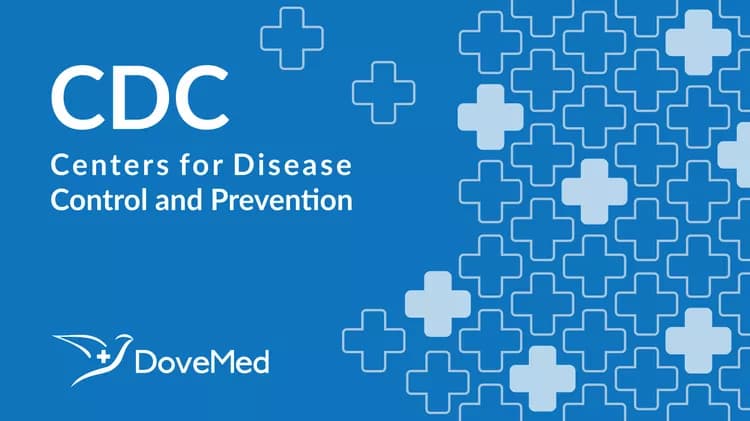
Infections in ICUs Plummeting, Too Many Remain in Hospitals and Dialysis Clinics
Infections in ICUs Plummeting, Too Many Remain in Hospitals and Dialysis Clinics
ICUs show that preventing infections is possible; other health care settings must adopt prevention practices
The number of bloodstream infections in intensive care unit patients with central lines decreased by 58 percent in 2009 compared to 2001, according to a new CDC Vital Signs report. During these nine years, the decrease represented up to 27,000 lives saved and $1.8 billion in excess health care costs. Bloodstream infections in patients with central lines can be deadly, killing as many as 1 in 4 patients who gets one.
A central line is a tube usually placed in a large vein of a patient's neck or chest to deliver treatment in an intensive care unit, elsewhere in the hospital, and during dialysis. A bloodstream infection can happen when germs enter the blood through a central line, often because proper procedures were not used while the central line was placed or maintained. In recent years, studies have proven that health care providers can prevent most bloodstream infections in patients with central lines by following CDC infection control recommendations, which include removing central lines as soon as medically appropriate. In hemodialysis patients, central lines should only be used when other options are unavailable.
"Preventing bloodstream infections is not only possible, it should be expected. Meticulous insertion and care of the central line by all members of the clinical care team including doctors, nurses and others at the bedside is essential. The next step is to apply what we've learned from this to other health care settings and other health care-associated conditions, so that all patients are protected," said Thomas R. Frieden, M.D., M.P.H., CDC director.
In addition to the ICU findings, the report found that about 60,000 bloodstream infections in patients with central lines occurred in non-ICU health care settings such as hospital wards and kidney dialysis clinics. About 23,000 of these occurred in non-ICU patients (2009) and about 37,000 infections occurred in dialysis clinics patients (2008).
"This reduction is the result of hospital, local, state and national medical and public health efforts focused on tracking infection rates and then using that information to tailor and evaluate prevention programs," said Denise Cardo, M.D., director of CDC's Division of Healthcare Quality Promotion. "The report findings point to a clear need for action beyond ICUs. Fortunately, we have a prevention model focused on full collaboration that can be applied broadly to maximize prevention efforts."
Infections are one of the leading causes of hospitalization and death for hemodialysis patients. At any given time, about 350,000 people are receiving hemodialysis treatment for kidney failure. Seven in 10 patients who receive dialysis begin that treatment through a central line.
Everyone Has a Role to Play in Prevention
CDC partners with other federal agencies, including the Agency for Healthcare Research and Quality and Centers for Medicare and Medicaid Services, as well as states, health care providers, and consumer groups. CDC is working toward prevention goals detailed in the U.S. Department of Health and Human Services' Action Plan to Prevent Healthcare-Associated Infections.
"These partnerships have fueled our prevention success, saving lives and moving us one step closer to eliminating healthcare-associated infections," said Cardo. "Now we must continue to implement what we know works and look at data to measure impact, all while continuing to research and fill remaining knowledge gaps."
To prevent bloodstream infections in patients with central lines, hospitals, dialysis centers, and other medical care locations can:
Make sure CDC infection control guidelines are followed every time a central line is put in and used.
Encourage staff members to speak up when guidelines aren't followed.
Use data for action. Track infection rates and germ types with CDC's National Healthcare Safety Network (NHSN) to learn where and why infections are happening, target actions to stop them, and track progress.
Recognize staff members or units that work hard to prevent central line infections or that solve issues with infection control.
Join state-based prevention programs such as the AHRQ-funded expansion of On the CUSP: Stop BSIs.
Patients with central lines and their caregivers can prevent bloodstream infections by asking their doctors and nurses to clean their hands before and after touching patients. In addition, ask which infection prevention methods will be used, why a central line is needed, and how long it will be in. Tell a nurse or doctor if the area around the central line becomes sore or red, or if the bandage falls off or looks wet or dirty.
CDC works in partnership with health departments, health care facilities, providers, and consumers to promote implementation of best practices, relying on CDC guidelines for infection prevention and using the National Healthcare Safety Network to track infections and monitor progress.
About Vital Signs
CDC Vital Signs is a monthly CDC report on the latest data and information for one of 12 key health indicators – cancer prevention, obesity, tobacco use, alcohol use, access to health care, HIV/AIDS, motor vehicle passenger safety, health care-associated infections, cardiovascular health, teen pregnancy, asthma and food safety. It provides a call to action, focusing public attention on what specific steps various groups (e.g., public health departments, health professionals, state and federal governments, and the public) could take to make the greatest improvement in the nation's health. The information is published in the CDC Morbidity and Mortality Weekly Report and also on the website, www.cdc.gov/vitalsigns.
###
U.S. DEPARTMENT OF HEALTH AND HUMAN SERVICES
Related Articles
Test Your Knowledge
Asked by users
Related Centers
Related Specialties
Related Physicians
Related Procedures
Related Resources
Join DoveHubs
and connect with fellow professionals

0 Comments
Please log in to post a comment.